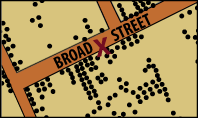In this course, you will begin to understand how to analyze and interpret data for public health purposes. This course focuses on how to use data to answer assessment questions. It also reviews some of the basic epidemiology and statistics underlying assessment and introduces you to the concepts of some frequently used measures in assessment.
Estimated time to complete: 45 minutes
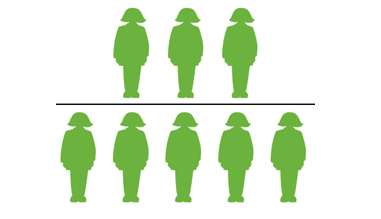
This course is the continuation of Analysis and Interpretation of Public Health Data, Part 1. In this course, we’ll look at when to use different measures of health events for community health assessment, and explore how to confirm that the data are reliable.
Estimated time to complete: 45 minutes
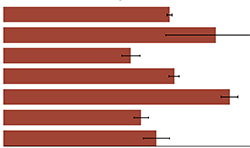
Are you a public health worker with little or no knowledge of epidemiology who would like to know more? This narrated, one-hour course introduces the concepts and principles of infectious disease in epidemiology. By the end of this course, you'll be familiar with infectious disease agents and transmission characteristics, epidemiologic methods, and vaccination and other control measures.
Estimated time to complete: 1 hour

Determining the cause of a disease or the positive effect of a health activity is an important part of decision-making in public health. But how do we know if something actually does cause a disease or improve our health? Inferring causality is a step-by-step process requiring a variety of information. In this course, Dr. Victoria Holt discusses seven guidelines to use in determining whether a specific agent or activity causes a health outcome. She illustrates each guideline with a public health example.
Estimated time to complete: 45 minutes

In this course, we'll discuss data sources available to public health professionals. We will discuss the most common data sets that are most commonly used in public health assessment, describe their characteristics and how they are used in assessment activities, and describe where you can access them. While the examples used in this course are from Washington State, most of the data sets are fairly standardized across states, and you should be able to find their equivalents by searching online for your state's data.
Estimated time to complete: 45 minutes

Do you find the thought of interpreting public health data intimidating? This narrated course introduces the terms used to describe the public's health and provides a basic competency in reading and presenting data. If you've ever looked at terms such as confidence interval or p-value and wondered what they meant, this course is for you.
Estimated time to complete: 1.5 hours

Contact tracing is a proven way to slow the spread of contagious diseases and a critical tool in the fight against COVID-19. In this course you will learn about the components of contract tracing, such as interviewing individuals infected with the disease, identifying close contacts they may have exposed, and providing those contacts with the information they need to monitor their health and prevent further spread of the illness.
Estimated time to complete: 1.5 hours

West Nile virus! Beef recalls! Contaminated spinach! We live in an age where disease outbreaks are commonplace. This one-hour online course outlines specific steps to take in determining if you have an outbreak on your hands, who should be involved in the investigation, the science behind it all, and how to communicate your findings to the public via the media.
Estimated time to complete: 1 hour

Surveillance is a key function of public health, but what does it mean? This course introduces public health surveillance concepts and principles for public health workers who have little or no prior training in epidemiology. You'll learn about surveillance systems in local, state, and national public health practice and how these important systems are used in tracking diseases and other public health threats.
Estimated time to complete: 1.5 hours

A study reports that smokers face a relative risk of dying from lung cancer 24 times higher than non-smokers, and a relative risk of only 1.4 times higher for dying of heart disease. How important are these differences? If you have no idea, then the course Measuring Risk in Epidemiology is for you. The course introduces key measures of risk, shows how they're calculated, and discusses how to interpret them when you encounter them in reports and news stories.
Estimated time to complete: 1 hour

Hone your public health assessment skills with Overview of Public Health Data. This 30 minute online course takes you through the basic information to use data in public health's core functions.
Estimated time to complete: 30 minutes
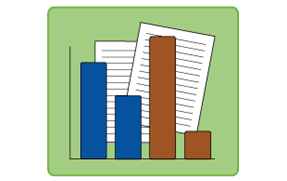
Public health practitioners who work with data need to present their findings in a way that is easy to understand and clearly emphasizes what they consider to be the most important results. In this course, you will learn some of the most common ways to present data visually. You will also see how to choose the right format for presenting your data, and learn some basic good practices for producing well-designed graphic displays of data.
Estimated time to complete: 45 minutes
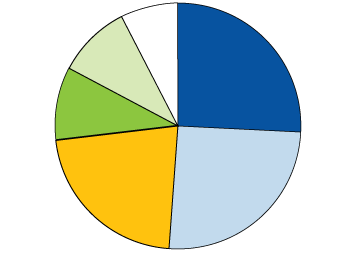
Screening is a critical tool that can save lives, improve health outcomes, and can even help public health practitioners make tough decisions about how to allocate limited resources. In this one-hour online course, you will learn what screening is, how to select an appropriate screening test and administer it, and how to evaluate the effectiveness of your screening program for your patients.
Estimated time to complete: 1 hour

Epidemiologic case-control studies are used to identify factors that may contribute to a medical condition. Epidemiological studies are categorized as either descriptive or analytic. This course describes the main elements of descriptive and analytic epidemiology and their associated study types briefly and clearly. In addition to case-control studies, you'll also learn about eight other commonly used study types, including the basics of each type of study and how each is used.
Estimated time to complete: 30 minutes

Have you ever wondered what epidemiologists do? This narrated, 45-minute course offers an overview of the purposes and uses of epidemiology in public health practice. It introduces concepts that are described more fully in our other online courses on epidemiology, and is a good place to start if you plan to take the nine-part series on epidemiology.
Estimated time to complete: 45 minutes
